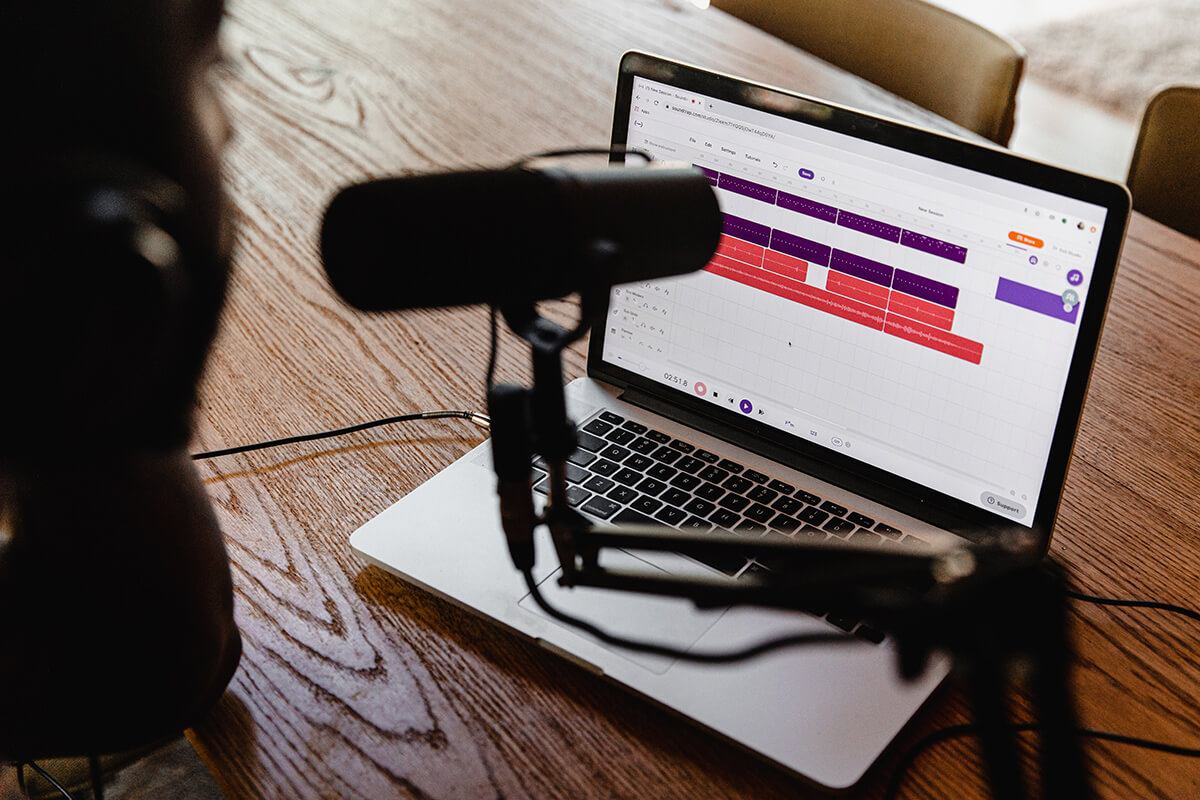How to Record Your Poetry: A Beginner’s Guide for Audio and Video
Recording your poetry is a fun and exciting way to share your work, and doing so has many amazing benefits. By reading your poems out loud, you can listen to the lyricism, the line breaks, and the syntax. This is a really effective way of knowing which lines need to be edited and which words could be replaced. Poetry is musical, and hearing how the words flow is one of the best ways of editing a poem.
Personalizing your poems by reading them is another important reason to record. You will not only connect with readers, but you will also become a part of the self-publishing renaissance. With the proliferation of self-publishing, poets are making videopoems and doing live Instagram readings. And if you get published in a literary magazine, you may be asked to record your poem. Recording your poetry also helps you practice reading your work out loud, and this will prepare you for books tours and interviews.
There are so many reasons to record your poems, and you can get started right away with a smartphone and some free apps. This is an incredible time to share your poetry. You don’t want to miss out. Here is a guide that will help you get started.
PRACTICE READING YOUR POEM
The first step in recording your poem is to read it out loud. As I mentioned before, this has the added benefit of helping you see if there is any editing left to do. I love reading poetry out loud, so I do this naturally. But knowing I will also record a poem motivates me to memorize it. Learning the poem by heart takes the reading experience to a more advanced level. Reciting a poem is no different from acting. When you’re beginning to read poetry, I recommend reading off the paper or your laptop and briefly looking up sporadically to connect with the listener. Whether you’re reading fiction or non-fiction, the most important element to reading a poem is to feel the emotions on the page as if they were your own and let your voice transmit those emotions.
CHOOSE A MICROPHONE
If you don’t have money to spend on recording equipment, don’t worry. Start with the microphone integrated with your smartphone. As you become more experienced and have money to spare, consider investing in a condenser microphone. If you’re looking for a price that’s reasonable for a beginner, you can never go wrong with the equipment from Blue Microphone. The Yeti is very popular right now with streamers and influencers. It’s great for those looking for good recording equipment at a reasonable price. My first microphone was a Blue Snowball, and I still use it today. But if you can splurge, then, by all means, I recommend you acquire the perfect professional microphone that will enhance the natural pitch and range of your voice.
As for accessories to achieve a good recording, you’ll need a phone or professional camera tripod to keep the recording still and to shoot from different angles. I use the Arkon camera stand and the Arkon tripod. You can also get a suspension boom to give you even more control of your camera angles. Lastly, you have to invest in a pop filter to protect your recording from sharp sounds. You can buy an affordable one for twenty bucks. It’s not necessary to spend too much on a pop filter when you’re starting off.
CREATE GOOD LIGHTING
Natural light is best for romantic poetry and for people on a budget. I still don’t own professional lighting equipment, so I just use lamps to add lighting to my face. Otherwise, the recording appears dark, and viewers won’t be able to see my emotions. Lighting can also enhance the mood of the poem. For example, if you want a romantic vibe, choose dim lighting and relaxing colors for your background. You can even add a gel filter to your camera.
Lighting is important, but not as important as your reading, so don’t worry too much about getting professional lighting equipment yet. The sun provides great lighting, and you can find a room in your house that has plenty of sunlight in the daytime and shoot there. You can also venture to a park in an area that is quiet and shoot a video.
CHOOSE A QUIET ROOM
It’s really important that you choose a quiet room to record and find a time when either no one will be in the house or there will be limited background noise. For example, almost every ASMR artist I watch films really late at night. Ideally, you would soundproof the room, but just finding a closet without windows will also work to limit noise. Make sure to record several takes, so you have plenty of options to choose from when you edit the recording.
EDIT THE RECORDING
The editing software you use will be dependent on how you shoot the video and audio. If you shoot the video on your smartphone then you can use free or paid subscription apps. If you shoot on your professional camera then you’ll most likely want professional editing software such as Adobe Premiere Pro. I still use iMovie, which is free, and I pay for a KineMaster subscription, which is really affordable for beginners. When I only want to record audio, I use GarageBand, as it’s free, but I’m also learning how to use Cubase, a software package for professional music production. It’s an amazing software, but it’s more complicated to use than free software options like Audacity.
Whatever equipment you use, remember that your reading is the most important element in a recording. You don’t need to spend much; you can create an amazing video or audio recording with just your talent, your voice, and a smartphone. I hope this guide has inspired you to grab your recording device and let the world hear your wonderful poetry.




